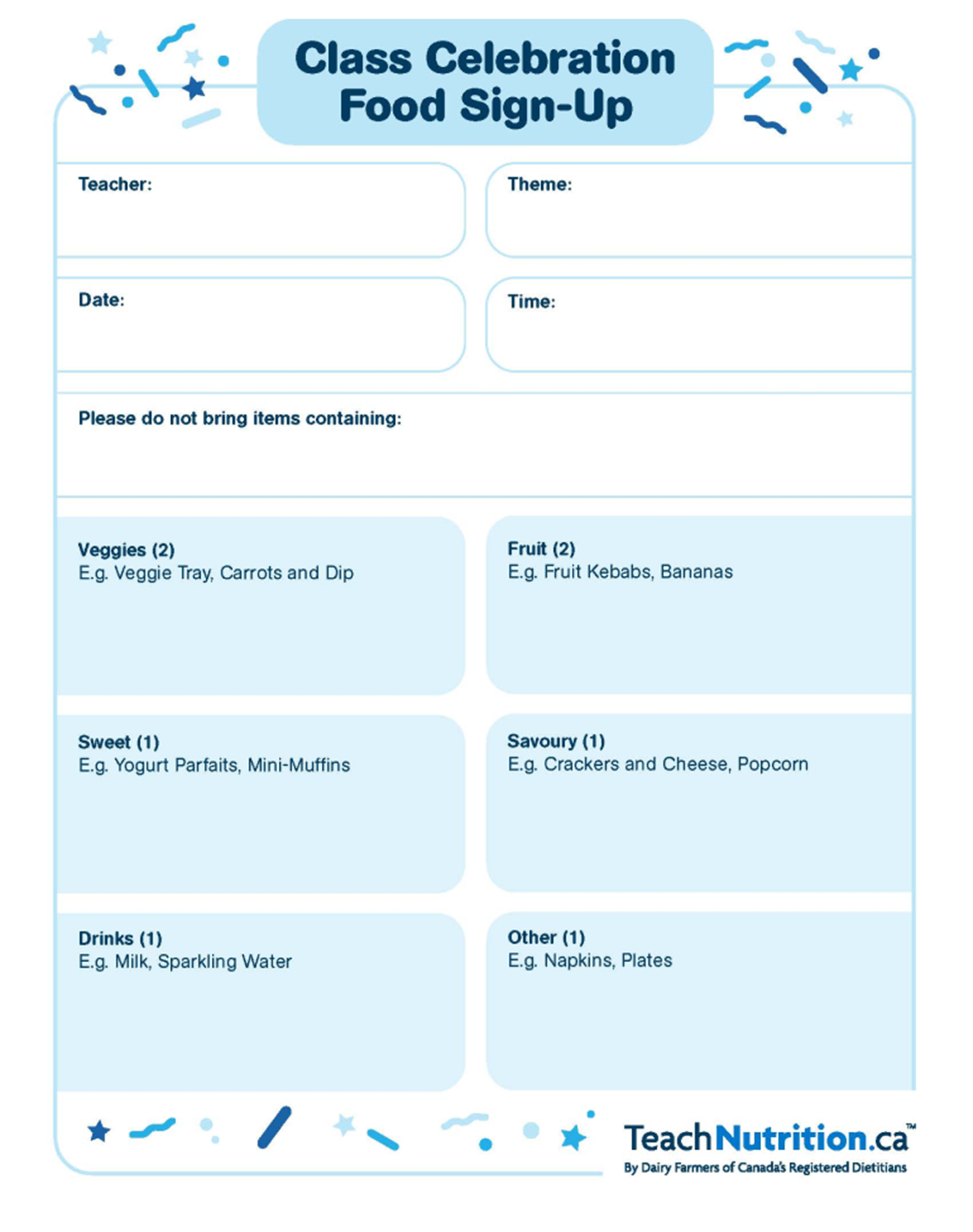Four tips to make classroom party planning easy.
Celebrations are a fun way to build relationships in the classroom and eating together is an important part of these special times. Here’s how you can plan a class party featuring a variety of food everyone can enjoy.
1. Plan the food
Class celebrations offer a chance to create excitement with an assortment of foods and are an opportunity to show that everyone can enjoy all foods without judgement. Making space for a variety of foods recognizes that food is more than nutrients. Many traditional celebratory foods may fall outside of nutrition guidelines, yet play a valuable role in connecting people and cultures. Try using a general framework that emphasizes Canada's Food Guide while leaving room for celebratory foods, as highlighted on this class celebration food sign-up sheet.
2. Create a schedule
Starting the celebration in the afternoon means students will have eaten lunch, making it easier for them to enjoy all the activities without food being the focus. Plan a specific time for students to sit and eat. Eating without the distraction of other activities helps students give their attention to the eating experience and enjoy being with others.
3. Involve others
Ask students to suggest foods and activities they would like to have at the celebration. Choose a theme, and decide whether you will invite any guests, such as other classes or caregivers. If you ask for help with food, cost, accessibility, school policies, and food safety all need to be considered. Keep requests simple for caregivers (e.g., bananas or popcorn). More complex items can be broken down into their ingredients. For example, if your beach party features tropical fruit yogurt parfaits, ask three people to bring one thing – a tub of yogurt, a can of pineapple or a box of cereal – and assemble the recipe as a party activity. Not all caregivers may be in a position to provide food, and sometimes it is most appropriate for the school to provide the food; tailor plans to your school. Communicate with those providing food to ensure that allergies or food restrictions in your class or school are accommodated so that everyone can participate in the fun.
4. Include movement, crafts and/or food activities
Just like food, movement and special activities are a big part of celebrations. Consider starting with a dance party or themed scavenger hunt. Simple seasonal crafts are a great way to let your students’ creativity shine! Have students make decorations for the event or cards to share with others. Try including a food activity – eating everyday foods in new ways can add excitement to the event. For example, have students make their own fruit and cheese kebabs or snack mix (e.g. dry cereal, sunflower seeds, raisins). Our friends at Alberta Milk offer many inspiring seasonal ideas.



